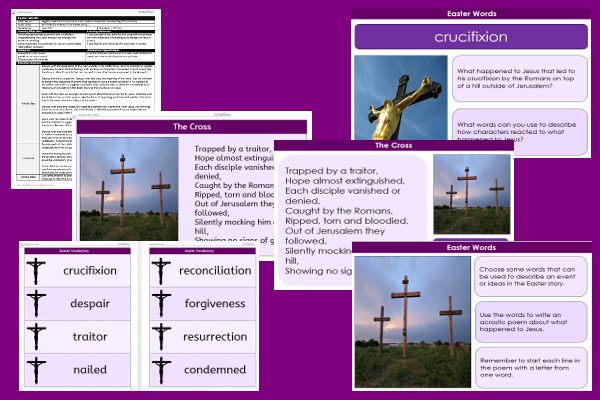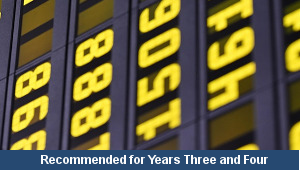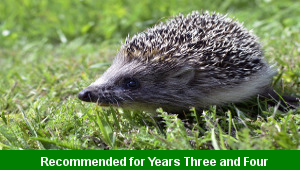Easter Words

This English teaching pack for Key Stage Two gets the children to read and compose a selection of acrostic poems to explain the meaning of some special vocabulary words that are connected to the Easter story.
The class can select adjectives, adverbs and prepositional phrases to write expanded noun phrases to express an idea in their poems about what happened to Jesus.
Download this teaching pack including a lesson plan, classroom activities and an interactive presentation to read and compose a selection of acrostic poems to explain the meaning of some special vocabulary words that are connected to the Easter story
Activities in this teaching pack include a shared reading text to identify and define vocabulary words used to express ideas and emotions in an acrostic poem about an event in the Easter story and a set of cards to select special words connected to what happened at Easter to use for the subject of a poem.
The interactive presentation gets the children to explore how to compose acrostic poems to explain the meaning of vocabulary connected to the Easter story.
This lesson is part of an English scheme of work to get the children to practise composing and publishing different types of poems that use line structures and vocabulary to illustrate scenes in the Easter story. There are teaching activities for shared learning, differentiated worksheets to support independent learning and interactive presentations to introduce concepts and key skills.
-

Rounding Hundreds
Explain and model how to round some different numbers to the nearest hundred based on the place values of the digits in each number
-

Rounding Tens
Identify and record how to round some different numbers to the nearest ten based on the place values of the digits in each number
-

Classic Animal Stories
Investigate the structure and content of classic works of fiction by significant authors with animals as the main characters
-

Cities, Towns and Villages
Research and present the history of a range of different buildings and people that are part of the local community using a school exhibition
